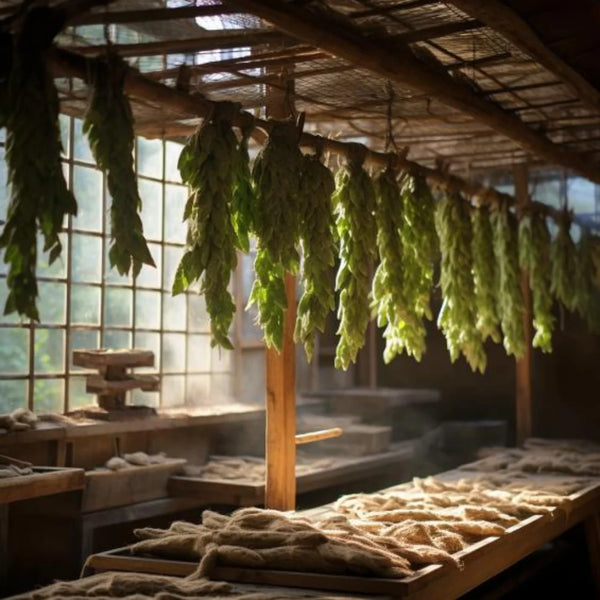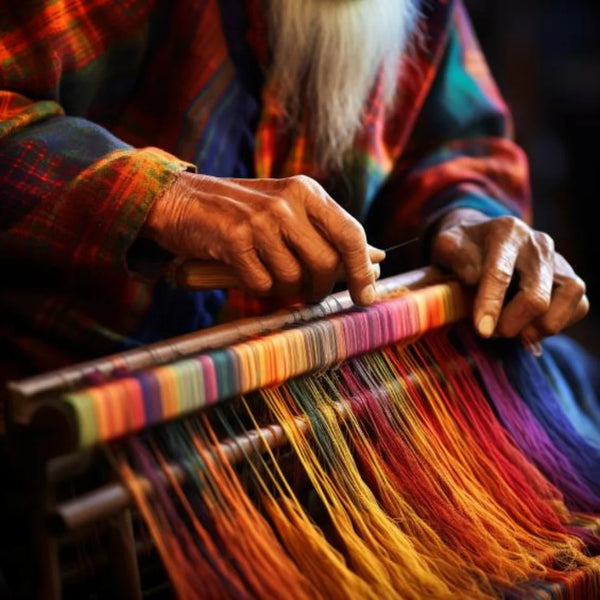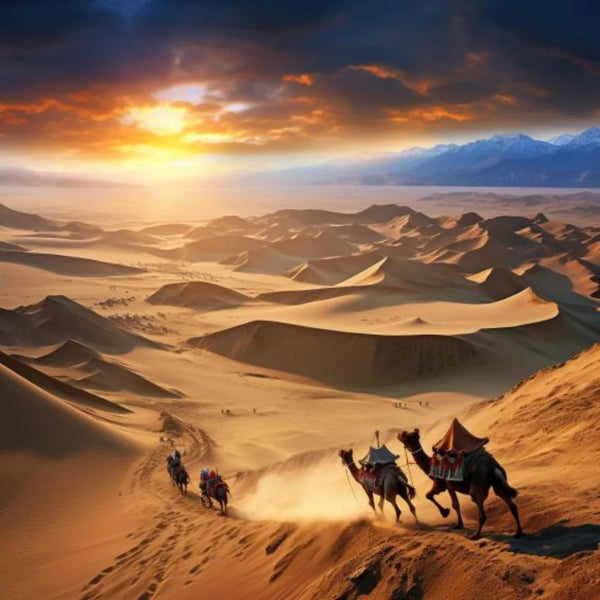Key Takeaways
silk is a precious material whose high price is explained by its complex and delicate manufacturing process. From breeding silkworms to artisanal weaving, each step requires unique know-how. The cost of skilled labor and low production yields are pushing up prices.
The French brand The Oversized Hoodie® 🇫🇷 is famous for its textile expertise, particularly its collection of high-end, 100% natural mulberry silk products certified Oeko-Tex® Standard 100.
Free from toxic and chemical substances, and ecological, the collections silk pillowcase, silk night maskand silk sheets stand out for their incomparable softness and excellent value for money, providing an unrivaled feeling of comfort.
The origin of animal silk: a complex process
The silk comes from the cocoons of the mulberry bombyx, the breeding and harvesting of the cocoons of which are very delicate. silkworms are fragile insects that require strict rearing conditions. Their life cycle is short, only a few weeks, and gives low yields of raw silk.

Also read: Which animal produces silk ?
The price of a meter of silk: the reflection of artisanal work
How is silk made ?
The making of silk begins with the breeding of silkworm (mulberry bombyx) in magnaneries. Once the cocoons have been harvested, it is necessary soak them in hot water to soften the secretion used to weave the cocoon. We then obtain a continuous thread of raw silk which must be unwound carefully. These threads are then woven using ancestral techniques to obtain the famous silk fabric.
What are the production costs of silk ?
Rearing the worms, delicately picking the cocoons, reeling and weaving by hand are steps that require an enormous amount of skilled human labor. This labor has a significant cost which is reflected in the final price of the silk.
In addition, at each stage, losses and scraps are frequent because of the fragility of the material. This reduces yields and increases the cost price of the silk produced.
After years of working with textiles, we have an even better appreciation of the unique know-how necessary to make a fabric of such exceptional quality. This is what pushes us to offer you noble, high-quality products 100% based on mulberry silk: silk pillowcases, silk sleep masks and night caps.
— Geoffrey, Founder of The Oversized Hoodie®
What justifies the high price of silk fabrics ?
The price of silk reflects the craftsmanship and attention to detail required to transform silkworm cocoons into beautiful fabric. Each meter of hand-produced silk is the result of long hours of labor by highly skilled workers.
In addition, the rarity of the raw material increases its value.Wild silk is particularly prized by couturiers for its exceptional qualities, which has an impact on prices.

One of our regular customers recently called us because she wanted to give her mother our luxurious silk pillowcase for her birthday . Seduced by the incomparable softness of our silk during a previous purchase, she wanted to make this gift something unique.
Amazed by the price of our pillowcase, significantly higher than those in satin, cotton or polyester, we patiently explained the know-how necessary for the creation of very high quality silk: the delicate breeding of silkworms, the careful harvesting of cocoons, the spinning and weaving carried out by hand by expert artisans ...
Convinced, she finally ordered our pillowcase, delighted to participate in maintaining this craft.

Also read: What is the best silk in the world ?
The history of silk: a precious material for centuries
Origins of silk production
silk has its origins in China around 5,000 years ago. Its discovery was due to chance, when a silkworm cocoon accidentally fell into the cup of hot tea of the Empress Xi Ling Shi. Fascinated by the shiny thread that escaped, she encouraged sericulture - the breeding of silkworms in order to harvest their precious thread.
Silk quickly became a symbol of social status and wealth in ancient Chinese society. Only nobles and high dignitaries could afford silk clothing, which was used during major ceremonies. Silk was also offered as tribute to the emperor, and the trade routes that carried it were jealously protected by the Chinese army.
Historical evolution of the silk trade
silk played an essential role in the development of trade routes between the East and the West. As early as the 1st century BC, the Silk Road allowed the transport of silk and other precious goods more than 7,000 km, from China to the Mediterranean.
This important road network has greatly facilitated cultural exchanges and the dissemination of innovations between very diverse civilizations. Silk was a rare and prized commodity, which was the subject of numerous desires and negotiations throughout history.
The Silk Road served as a bridge between Eastern and Western cultures, allowing the circulation of ideas, customs and technical innovations over great distances.
— Geoffrey, Founder of The Oversized Hoodie®
Over time, China's silk monopoly gradually crumbled. Other countries such as India, Persia and the Byzantine kingdom acquired the necessary knowledge to produce their own silks.
- Byzantine silk
- Persian silks
- Indian silk
The influence of silk thus spread across the world, leaving a lasting imprint on international trade and cultural traditions.Symbol par excellence of wealth and refinement, the precious fabric continues to fascinate and nourishes the collective imagination.
Also read: What is the natural color of silk ?
The evolution of the price of silk throughout history
Silk has always been a very valuable material, reserved for the noble and the rich. In the Middle Ages, the price of silk was even as high as that of gold! Today, even though production has been streamlined, the luxurious character and unique properties of silk still make it an expensive material.
The influence of history on the current cost of silk
The turbulent history of the silk trade, jealously kept secret by China for centuries, has reinforced the precious nature of this fiber and its status as a royal fabric in many civilizations. This historical past still colors collective representations of silk today and contributes to maintaining its position as a luxurious material.
The place of silk in different historical cultures
Silk has held a special place in many civilizations throughout the ages. In China, the cradle of sericulture, it was reserved for the emperor and the nobles. Only they had the right to wear silk clothes, symbols of power and wealth.
In India and Persia, the Silk Road encouraged the adoption of this precious textile material. Silk was used to make saris, turbans and luxurious hangings. It was also offered as tribute to sovereigns.
In the Roman Empire, silk was considered a very valuable commodity, even more expensive than spices or precious metals. Only the aristocracy could afford silk fabrics imported at great expense from China.
In the Middle Ages in Europe, silk remained out of the reach of the people and was reserved for liturgical vestments, the nobles and the upper bourgeoisie. Venice and the Italian cities were the centers of the silk trade.
Besides its appreciation for its beauty and high market value, silk held great cultural and spiritual importance in Asia.
Cultural significance of silk
Silk thread was used in divinatory practices to interpret the future, and also featured prominently in ceremonies such as weddings where it symbolized the link between new husband.
Silk was also associated with the virtues of longevity and health. Thus, the Chinese emperor Qianlong (1711-1799) drank a mixture made from silk filaments in the hope of prolonging his life.
Silk has therefore always been perceived throughout the ages and cultures as a noble and luxurious material, a symbol of wealth, refinement and power. Its high price reflected this.

Also read: Which country invented silk ?
Is real silk more expensive than some others ?
Yes, real silk produced from the cocoons of the mulberry bombyx is more expensive than wild silk or satin, because its entire manufacturing process is very expensive. Additionally, the incomparable shine and softness of real silk make it the ultimate benchmark in luxurious textiles.
At The Oversized Hoodie®, we are proud to incorporate Oeko-Tex certified natural silk in all our designs and products.It is an investment but our most demanding customers know how to appreciate this material which combines luxury and ethics.
— Geoffrey, Founder of The Oversized Hoodie®
The unique properties of silk, its durability and its ease of maintenance compared to other noble materials such as wool or cashmere make it an exceptional product which amply justifies its price for enthusiasts.

Also read: How to recognize real silk ?
Silk and satin: two distinct materials
Origins and differences between silk and satin
Satin is a particular weave that can be made with different materials such as cotton, silk, polyester or nylon. Conversely, silk refers to the raw material spun by the bombyx. Although silk satin exists, they are therefore two different products.
Satin is distinguished by its soft and shiny feel due to a special weave. But its properties and price are much lower than those of real silk.
Why is satin cheaper than silk ?
Unlike silk, the production of satin, even silk, is mechanized and industrialized. This significantly reduces labor costs. In addition, satin often uses synthetic materials that are much cheaper than precious silk. These two factors explain its lower price.
Also read: Natural or synthetic silk ?
Conclusion
The high price of silk can be explained above all by the very specific and risky production process which begins with the delicate breeding of the silkworm.
The numerous manual steps to transform the cocoons into threads then into fabric, and the unique skills that this requires, also increase the cost of this material exceptional textile.
The luxurious character and historical origins of silk also make it a prestigious textile which justifies its price for lovers of this fascinating fiber.
| Appearance | Explanation | Impact on price | Comparison with other subjects |
|---|---|---|---|
| Production process | Delicate silkworm breeding and artisanal weaving | High cost of skilled labor | More complex and expensive than cotton or wool |
| Quality and properties | Softness, shine, durability | Justifies the high price | Superior to satin and other synthetic materials |
| Rarity | Limited production, highly prized wild silk | Increases the value of silk | More rare and precious than cotton or wool |
| Historical and cultural impact | Luxury material status for centuries | Reinforces the prestigious character | Perceived as more noble than most other textiles |
| Maintenance and durability | Ease of maintenance, resistance to time | Long-term investment | Significant comparative advantages |
FAQ
Is real silk expensive ?
Yes, real silk produced from the cocoons of the silkworm, called raw silk, is an expensive material due to its complex and artisanal manufacturing process.
Why are some silks more expensive than others ?
Certain silks such as wild silk are rarer or have exceptional qualities, which explains their lower selling price higher than classic silk.
Why is silk more expensive than cotton ?
silk is more expensive than cotton because its production from the breeding of the silkworm is long, risky and demanding. The delicate spinning and weaving processes also increase its cost.
What is the most expensive silk ?
Wild silk, which comes from the Mandarina bombyx and not from raised silkworms, is the most expensive. Its rarity and superior qualities make it the most precious silk.
Satin or silk ?
silk is a textile material coming from the cocoon of the silkworm, satin is a type of weaving. Between silk or satin, we recommend silk for its brilliance, softness and resistance much greater than satin, which explains its price much higher.
Where does silk come from ?
The silk comes from the cocoons woven by the larvae (caterpillars) of the mulberry bombyx to metamorphose there. These insects are raised on farms called magnaneries.
How is silk made ?
silk is produced by unwinding the cocoons to obtain a continuous thread, the threads are then woven to obtain fabric from silk. Each step is done in the traditional way, on manual looms.
Satin or silk for hair ?
silk is preferable for hair thanks to its natural softness and exceptional shine. Satin is more abrasive and tends to dry out the lengths.
Silk or satin sheet ?
For bedding, silk is the optimal choice for its soft feel, breathability and thermal regulation. Satin is less comfortable, wrinkles and slips easily.
Sources
[1] "Why is silk so expensive ?", Business Insider
[2] "Why is silk expensive ?", Gentleman's Gazette
Updated February 13, 2024






